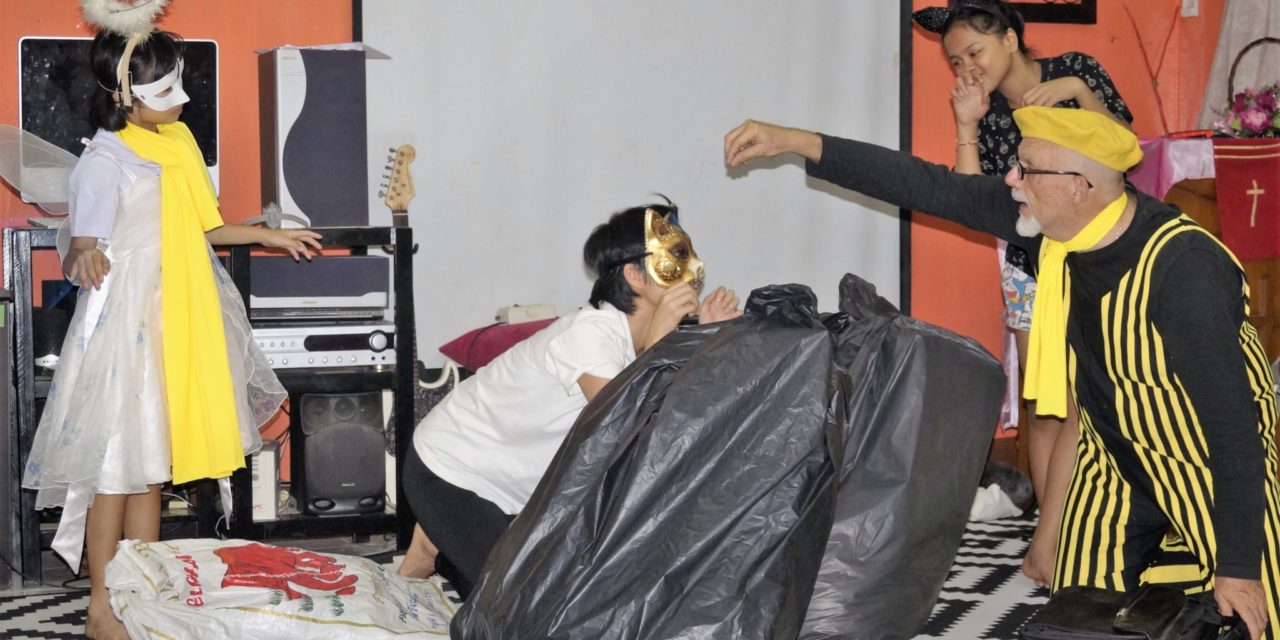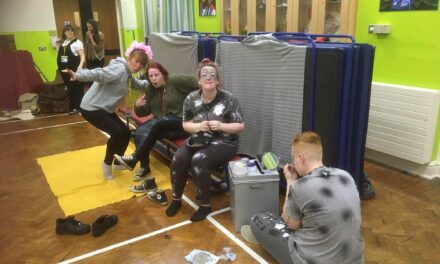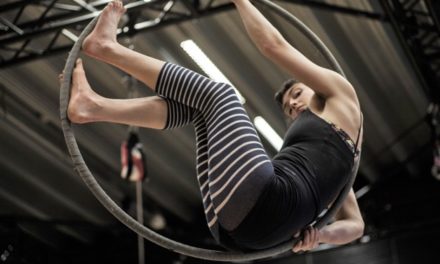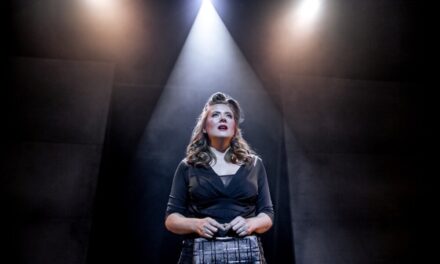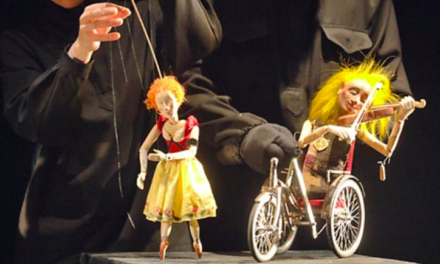Thanks to the cooperation of several NGOs in Thailand, Elixir Mime was able to give three mime workshops and performances in Bangkok and one in Chiang Mai. These included the Thanksgiving Home (23 developmentally challenged kids and needy youth), the House of Blessing (about 30 kids born in prisons who were stigmatized or abandoned), and the Emergency Home (a protective shelter for those who have suffered from abuse, domestic violence, or rape). In Chiang Mai, we worked at an international school that was interested in training their teachers in performing arts methods, especially with Christmas in mind.
We worked with a specific theme. A big event was organized on the Sunday after our visit for the women of the Emergency Home. The theme for our performance was “I Am”—the goal being to instill a sense of self-worth in the women and children. Some of the specific attributes we covered were: I am: loved, love life, valuable, beautiful, a good friend, a good person, not guilty, worthy, strong, can do it, nice to be with, clever, forgiven, and not afraid of making mistakes.
We used simple object-lesson stories to illustrate these themes, such as a bouncy ball to show resiliency (bouncing back), an umbrella to show protection, a diamond to show how valuable participants are, a mirror to show that they are beautiful, and a medal to show that they are winners. In this case, the prop triggered the story to illustrate the theme. For example, to illustrate the theme of how valuable each person is, we acted out a woman dressed in black cloth with an attitude of despair who held in her hands a lump of clay that symbolized her beating heart. An explorer came with a flashlight and found her. He asked her to give her heart to him. She was hesitant at first but then reluctantly gave it to him. The explorer removed the outside layer of clay to expose a brilliant diamond within. He then polished it and gave it back to her. She became elated and showed it with joy to others.
We made a game of it and had a list of possible answers in Thai, and the audience members had to choose the correct word that the sketch represented. Prizes were awarded.
Usually we cover basic acting principles in our workshops that participants can apply in their own future performances; but in this case we focused on creating a performance based on a theme and then taught the principles needed to bring that about as we rehearsed. I call this theme-based training and performance.
Here are some of the things we learned in these workshops:
- Encouraging shy or reticent students to get more involved. One young boy was so focused on football that he wasn’t interested in much else. He was very shy, and when we used a soccer ball as a tool to bring out various principles in teamwork, etc., he emerged from his shyness. Later, when we did other activities, like acting out various animals, he got immersed in the details of performing the mime accurately.
- Making a powerful “wow” ending to stories so that they finish with a flourish.
- Covering staging basics, such as don’t turn your back to the audience, use your entire full body to express ideas and emotions, realize that timing is important, use your senses, focus and concentrate, keep your eyes on the goal, always keep in mind what you want to accomplish, use contrasts to bring out principles, and use the creative process to solve problems and simplify complex stories.
- Using the dynamics of the group to improve what you’re doing and give a proper presentation.
- Learning the principles of blocking the action and how to select stories.
- Working through the creative process—everybody getting involved so they have ownership.
Here is a reaction from one of the teachers and participants of the workshops:
“Initially I was overcome with how could you possibly change a story into a pantomime—not to mention all of the other details that would go into creating a performance with ‘no actor’ types? But as Shakespeare said, ‘All the world is a stage and we all are actors . . .’ I guess some of us are unwilling actors, while others are doing a grand performance which everyone else can see. I learned I could be natural and be a good actor.
The way you went about it made it seem so simple and it was easy to get started. This was a sort of revolutionary approach, which is: to not wait until everything is perfect, but to start with what you have, right where you are and that you can start right now! That was mind-blowing!
When some of the participants discovered that their input was valued, they were encouraged to share their ideas more as they saw them implemented.
The warm-up exercises to teach acting points, as well as the props, the hats, and masks helped us to see how one ‘little thing’ can change and say so much. All of this was very enlightening.
The story selection process, the blocking of the action, the importance of minimal movement or, better yet, ‘movement with meaning,’ helped us not to be misunderstood or to distract from the main story.
We learned not to get stuck in a rut about ideas but saw that it was possible to have some freedom of movement of ideas without getting completely derailed.
The idea of getting feedback at the end of the day as well as at the end of the seminar was good as you are getting these ideas fresh.”
The mime and storytelling workshops that were held in Thailand were a great experience for us as well as for the participants and opened up many possibilities for future collaboration on other projects.
This post was written by the author in their personal capacity.The opinions expressed in this article are the author’s own and do not reflect the view of The Theatre Times, their staff or collaborators.
This post was written by Curtis Peter van Gorder.
The views expressed here belong to the author and do not necessarily reflect our views and opinions.

